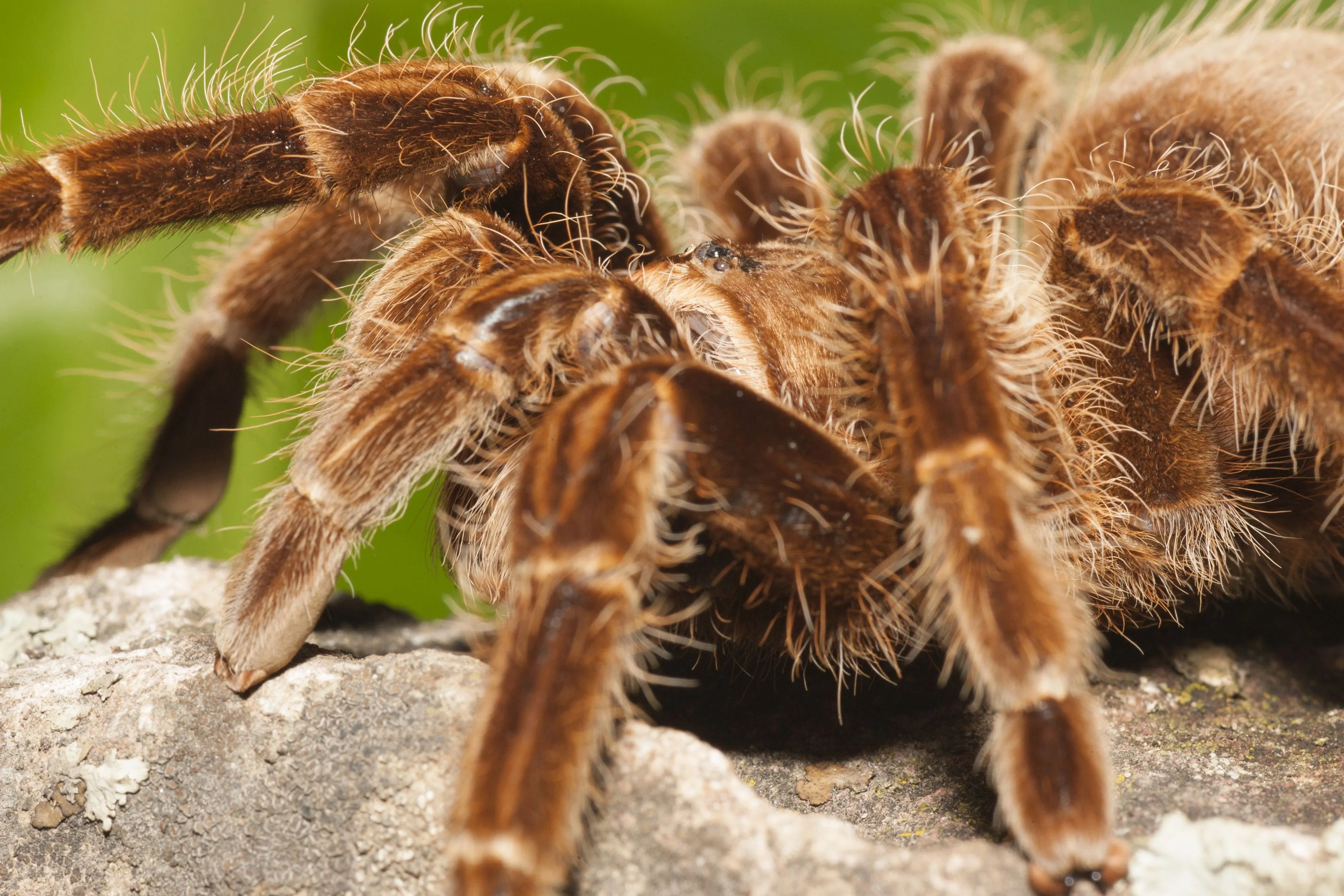What Makes a Tarantula Species Safe for Pets?
Choosing a tarantula as a pet can be an exciting experience, but it’s crucial to prioritize safety. Not all tarantula species are created equal when it comes to their suitability as pets. Several factors contribute to a tarantula’s safety profile, making some species far more manageable and less likely to pose a risk to their owners. Understanding these factors is the first step in becoming a responsible tarantula owner and ensuring a positive experience for both you and your eight-legged friend. Careful consideration of temperament, venom potency, and defensive mechanisms can help you make an informed decision.
Temperament and Behavior
Temperament is a key indicator of a tarantula’s safety. Some species are naturally docile, preferring to retreat and hide rather than display aggressive behaviors. These tarantulas are less likely to bite or exhibit defensive postures when handled or disturbed. In contrast, other species are more prone to being defensive and may display aggressive behaviors such as raising their front legs, flicking urticating hairs, or even attempting to bite. Researching the typical behavior of a species is essential. Look for species known for their calmness and tolerance of human interaction. This reduces the likelihood of stressful encounters and potential injuries.
Venom Potency
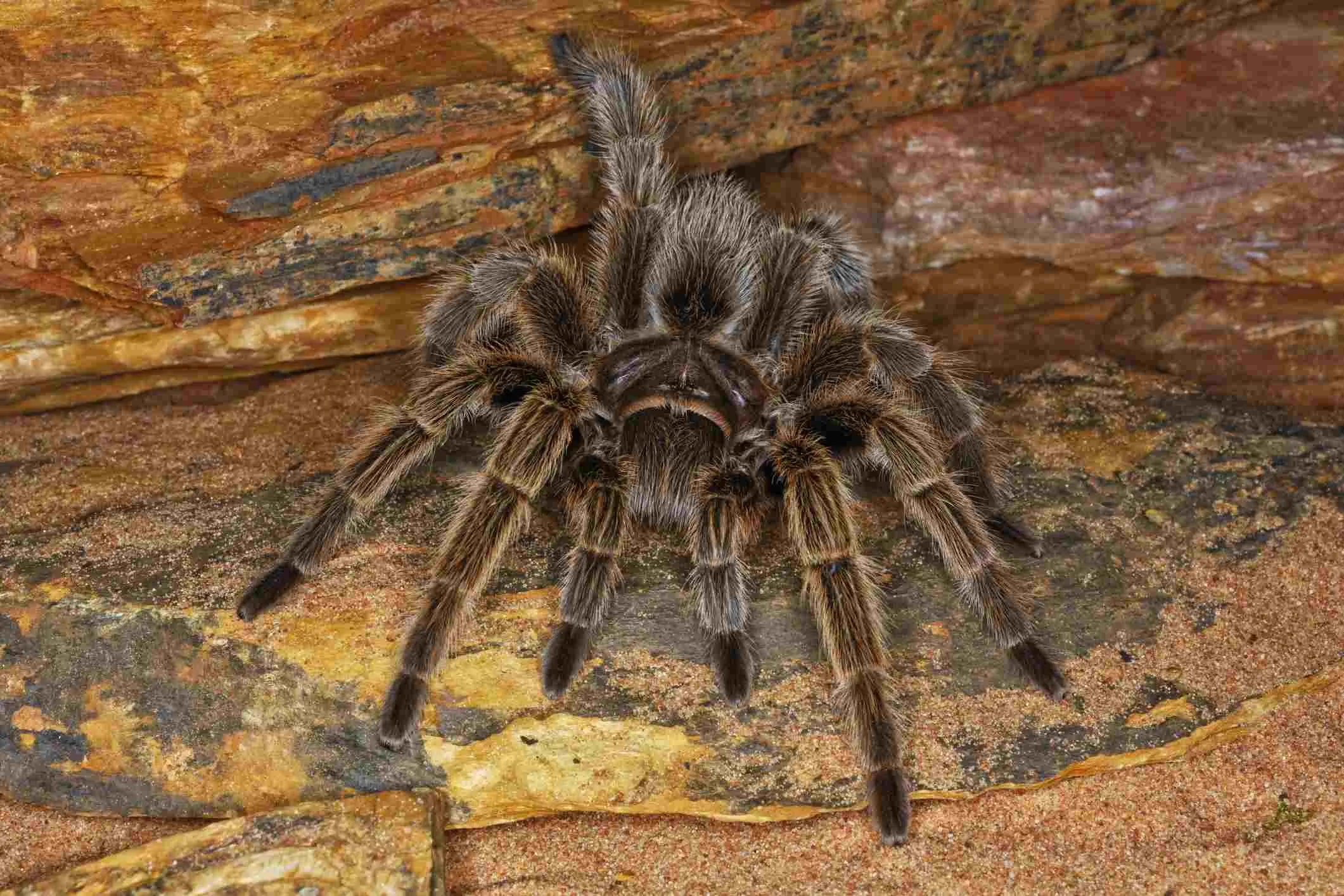
While all tarantulas possess venom, the potency varies significantly between species. The venom of most tarantula species is not considered medically significant to humans, often causing localized pain, redness, and swelling, similar to a bee sting. However, some species have more potent venom, which could potentially cause more severe reactions, although this is rare. It’s important to note that the venom’s effect also depends on the individual and their sensitivity. When selecting a pet tarantula, it’s advisable to choose species known for having relatively mild venom, further minimizing potential risks to your health. Proper research on the species’ venom profile is paramount.
Defensive Mechanisms
Tarantulas employ various defensive mechanisms to protect themselves from perceived threats. The most common defense is the flicking of urticating hairs, which are barbed hairs that irritate the skin and eyes. Some species are more prone to flicking these hairs than others, making them less desirable as pets. Another defense mechanism is biting, which, while not always dangerous, can be a painful experience. Some tarantulas also have a threat posture where they raise their front legs, which is a clear warning sign. Choosing species that are less likely to employ these defensive tactics enhances the safety of handling and interacting with your pet. Knowing these mechanisms helps in understanding and anticipating your tarantula’s behavior, thus minimizing the chances of unwanted interactions.
Top 5 Safe Tarantula Species for Pet Owners
Based on temperament, venom potency, and defensive behaviors, here are five tarantula species that are generally considered safe and suitable for pet owners. These species are known for their docile nature and relative ease of care, making them ideal for both novice and experienced arachnid enthusiasts. Always remember to handle any tarantula with care and respect, regardless of the species.
Chilean Rose Hair Tarantula
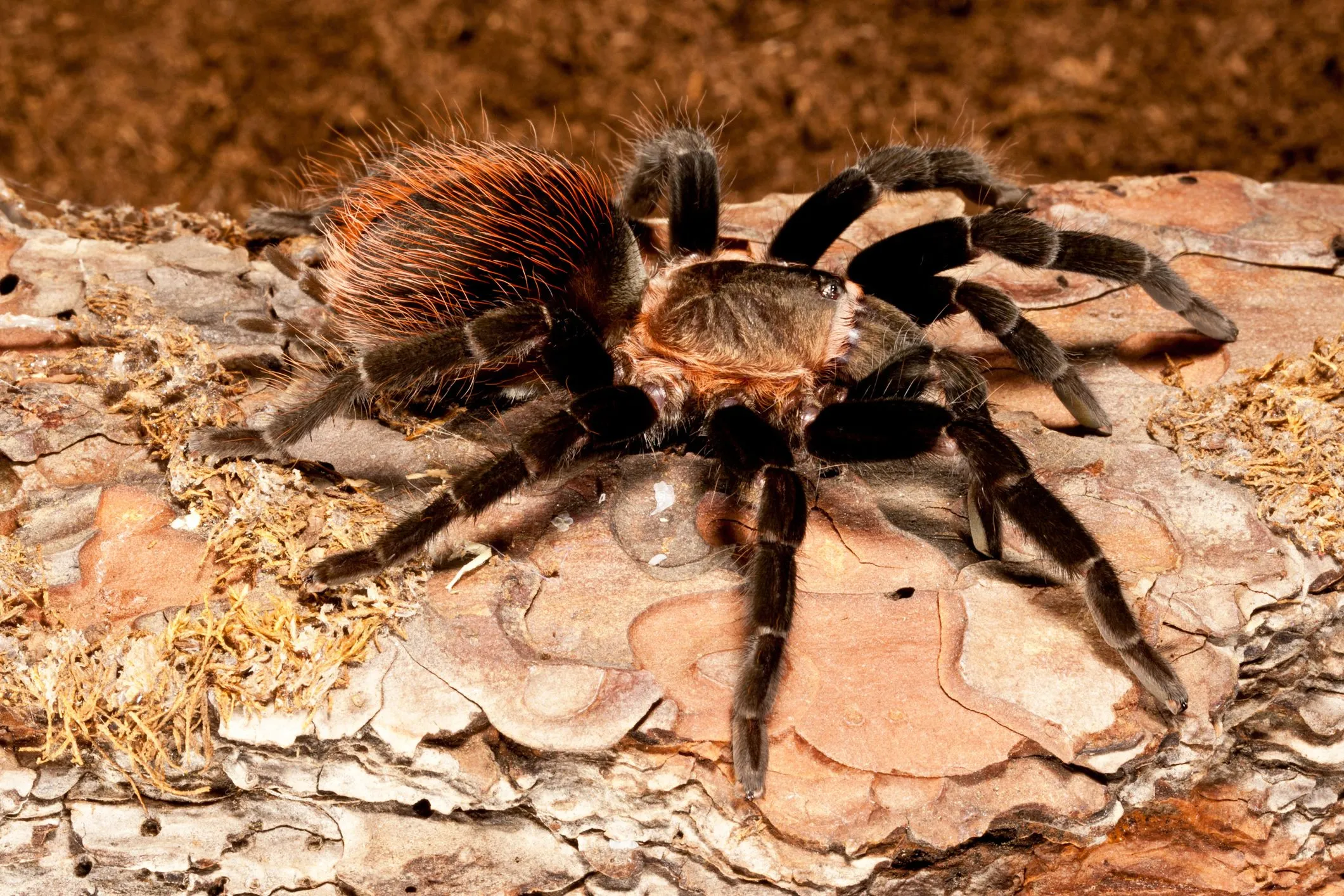
The Chilean Rose Hair Tarantula (Grammostola rosea) is one of the most popular tarantula species for beginners. They are known for their docile temperament and relatively low maintenance requirements. These tarantulas are generally slow-moving and less likely to bite or flick hairs when handled gently. Their mild venom makes them a safe choice for those new to tarantula ownership. The Chilean Rose Hair Tarantula’s calm demeanor makes them a pleasure to observe and care for. This species also comes in a range of colors, adding beauty to any collection.
Care and Habitat
Chilean Rose Hair Tarantulas thrive in a terrestrial setup with a substrate of peat moss or coconut fiber. They require a temperature range of 75-85°F and a humidity level of 60-70%. A hide, such as a cork bark piece, is essential for providing a safe space. Feeding involves offering appropriately sized insects like crickets or mealworms a few times a week. Always ensure fresh water is available in a shallow dish.
Handling Tips
Handle your Chilean Rose Hair Tarantula gently and with caution. Avoid sudden movements, as they may startle the tarantula. Allow it to walk onto your hand rather than picking it up. Supervise children and educate them on the proper way to interact with the tarantula. When handling, keep the tarantula close to the ground to prevent injury from a fall.
Mexican Red Knee Tarantula
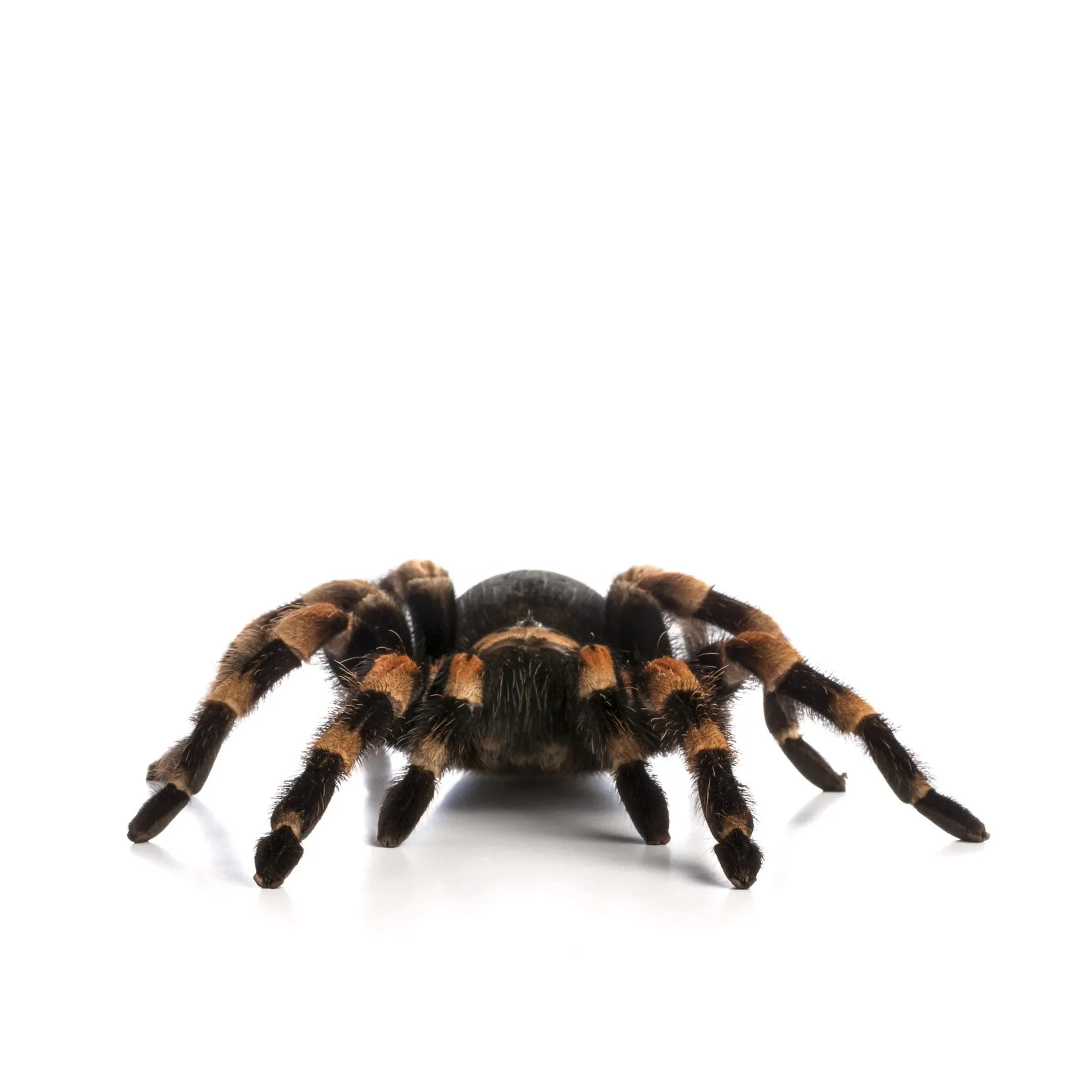
The Mexican Red Knee Tarantula (Brachypelma hamorii) is another excellent choice for pet owners. These tarantulas are known for their striking appearance, featuring vibrant red markings on their leg joints, and their relatively docile nature. They are generally easy to handle and have a calm temperament, making them a good option for those seeking a visually appealing and manageable tarantula. Their calm demeanor adds to their appeal and makes them a wonderful addition to any collection.
Care and Habitat
Mexican Red Knee Tarantulas prefer a terrestrial setup similar to the Chilean Rose Hair Tarantula. Use a substrate of peat moss, coconut fiber, or a mix of both. Maintain a temperature of 75-85°F and a humidity level of 60-70%. Provide a hide and ensure the enclosure is well-ventilated. Feed them insects such as crickets and roaches, adjusting the size of the prey to the tarantula’s size. Always provide a shallow water dish.
Handling Tips
When handling, move slowly and avoid startling the tarantula. Encourage it to walk onto your hand rather than picking it up. Be aware that they may flick hairs if they feel threatened, so keep your hands away from the abdomen. Handle them over a soft surface to avoid injury if they fall. Always wash your hands after handling.
Costa Rican Zebra Tarantula
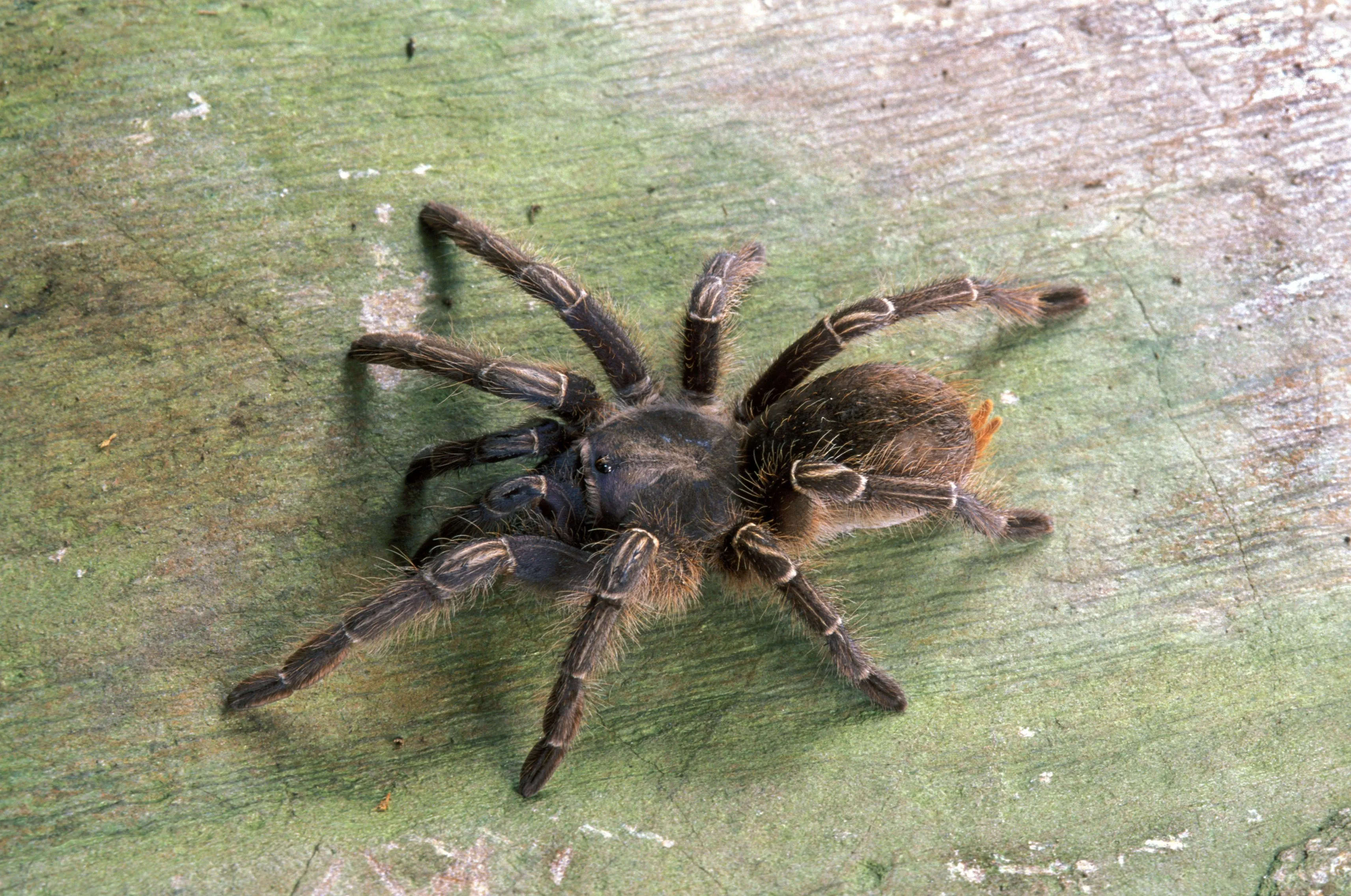
The Costa Rican Zebra Tarantula (Aphonopelma seemanni) is another popular choice for its striking appearance and relatively calm behavior. They feature bold black and white stripes, which add to their appeal. These tarantulas are typically docile and can be handled with care. They are also known for their hardiness, making them a good option for beginners. Their unique appearance sets them apart and makes them a favorite for many pet owners.
Care and Habitat
Costa Rican Zebra Tarantulas are also terrestrial and thrive in similar conditions as the previously mentioned species. Use a substrate of peat moss or coconut fiber. Maintain a temperature between 72-82°F and humidity of 65-75%. Provide a hide and ensure good ventilation. Feeding involves a diet of appropriately sized insects, with crickets and roaches being suitable options. Always provide fresh water.
Handling Tips
Handle Costa Rican Zebra Tarantulas with gentle, slow movements. Encourage them to walk onto your hand rather than picking them up. While they are generally docile, avoid sudden movements. Supervise children when they are interacting with the tarantula. Always keep the tarantula close to a surface during handling.
Pinktoe Tarantula
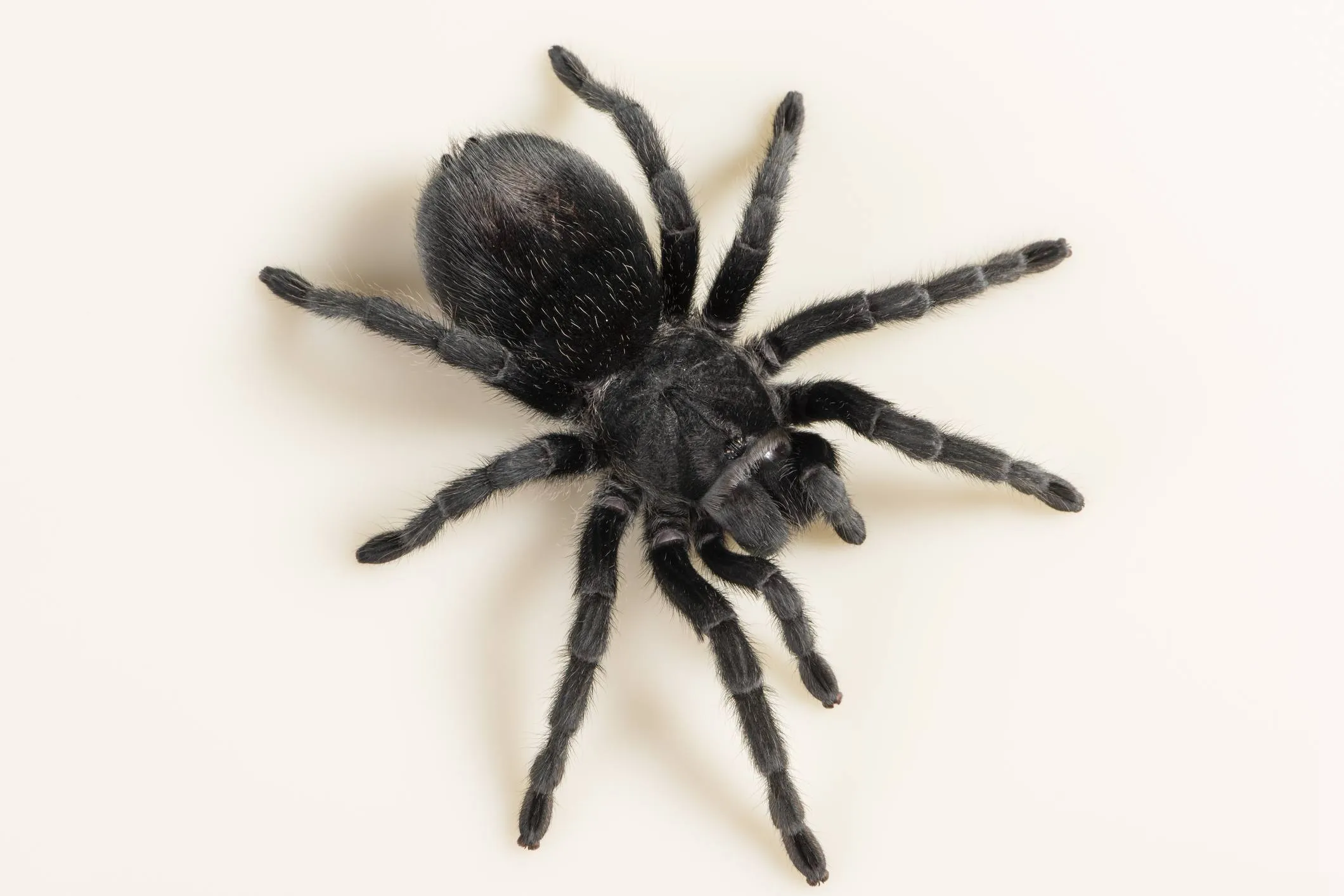
The Pinktoe Tarantula (Avicularia avicularia) is a arboreal species that offers a unique experience for pet owners. They are known for their beautiful coloration, featuring pink tips on their toes, and their generally docile temperament. They are also relatively fast, making them more engaging to observe. Their arboreal nature means they will require a taller enclosure with plenty of vertical climbing space. Despite their speed, they are typically not aggressive and can be handled with care.
Care and Habitat
Pinktoe Tarantulas require a vertical enclosure with plenty of climbing options, such as branches and cork bark. Use a substrate of coconut fiber or a mix of peat moss and vermiculite. Maintain a temperature between 75-80°F and a higher humidity level of 75-85%. They need a well-ventilated environment. Feeding involves appropriately sized insects, with crickets and roaches being good options. Always provide a water dish, and mist the enclosure regularly to maintain humidity.
Handling Tips
Pinktoe Tarantulas are fast, so handle them with caution. Be aware of their speed, and handle them in a contained area. Encourage them to walk onto your hand. Avoid squeezing or sudden movements. Always provide a safe environment and supervise handling sessions.
Curly Hair Tarantula
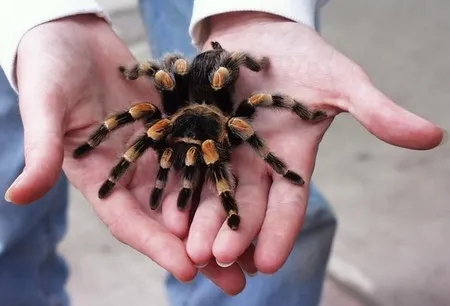
The Curly Hair Tarantula (Tliltocatl albopilosus) is an excellent choice for beginners due to its calm temperament and hardiness. They are known for their distinctive appearance, featuring brown hairs that curl, giving them a unique look. These tarantulas are generally docile and relatively slow-moving, making them easier to handle. They are also less prone to flicking urticating hairs compared to some other species. The curly hair tarantula’s gentle nature adds to their appeal as a beginner-friendly pet.
Care and Habitat
Curly Hair Tarantulas are terrestrial species. They require a substrate of peat moss, coconut fiber, or a mix. Maintain a temperature between 70-80°F and a humidity level of 65-75%. Provide a hide and good ventilation. Feed them a diet of appropriately sized insects, such as crickets and mealworms. Always provide fresh water.
Handling Tips
Handle your Curly Hair Tarantula with gentle, slow movements. Allow it to walk onto your hand rather than picking it up. While they are generally docile, be mindful of any signs of stress. Avoid handling them unnecessarily. Always wash your hands before and after handling your tarantula.
Essential Care Tips for All Tarantula Species
Regardless of the species you choose, consistent care is paramount to ensure your tarantula’s health and well-being. These universal care tips will help you provide a comfortable and safe environment for your pet. Regular maintenance and careful observation can help you identify any potential health issues early on, guaranteeing a long and fulfilling experience with your tarantula. Proper care not only ensures the health of the tarantula but also enhances the enjoyment of the tarantula-keeping experience.
Proper Enclosure Setup
Setting up the right enclosure is crucial for your tarantula’s well-being. The enclosure should be appropriate for the tarantula’s size, allowing enough space for movement and growth. Ensure the enclosure is escape-proof and provides the right substrate for burrowing or climbing. The substrate should be non-toxic, retain moisture, and allow the tarantula to feel secure. Provide hides such as cork bark, half logs, or artificial caves. Maintain the correct temperature and humidity levels appropriate for your chosen species. Ensure proper ventilation to prevent mold growth. Always consider the species’ specific needs when setting up the enclosure.
Feeding and Hydration
Feeding your tarantula is straightforward. Offer appropriately sized insects, such as crickets, roaches, or mealworms, depending on the size of your tarantula. Feed juveniles more frequently, while adults can be fed less often. Remove any uneaten food within 24 hours to prevent mold growth. Provide a shallow water dish with fresh, clean water at all times. Monitor your tarantula’s body condition; a plump abdomen indicates good health. Always ensure that the prey insects are free from pesticides or other harmful substances.
Handling and Interaction
Handle your tarantula with care and respect. Always move slowly and avoid sudden movements. Encourage the tarantula to walk onto your hand rather than picking it up. Keep handling sessions brief to avoid stressing the tarantula. Always supervise children and educate them on proper handling techniques. Wash your hands before and after handling. If your tarantula displays signs of stress, such as raising its legs or flicking hairs, immediately cease handling. Always remember to prioritize the tarantula’s well-being and safety during interactions.
Conclusion
Choosing a tarantula as a pet can be a rewarding experience. Selecting a safe and suitable species, coupled with proper care and handling, will enhance the well-being of your tarantula and your enjoyment of owning it. By following the guidelines above, you can ensure a safe and fulfilling experience. Thorough research and understanding of the chosen species’ behavior and needs are fundamental to providing a healthy environment for your arachnid friend. Remember, responsible pet ownership means prioritizing the well-being of your pet above all else. Enjoy the fascinating world of tarantulas, and cherish the unique companionship they offer.
